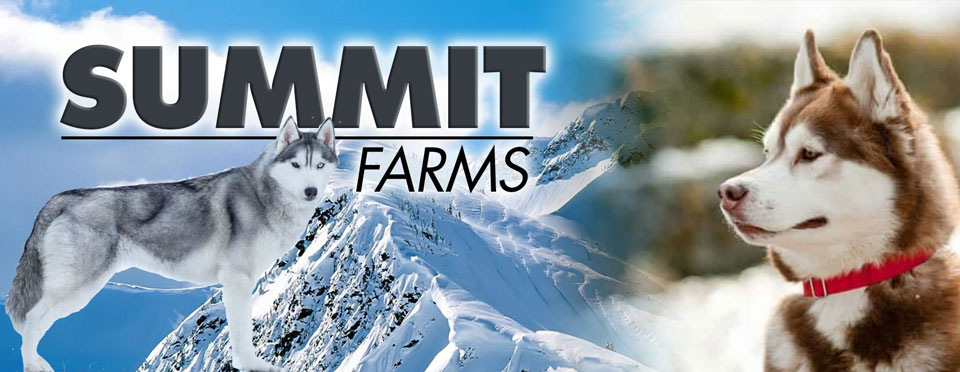About Alaskan Dogs

Siberian Husky
The Siberian Husky originated in north-eastern Siberia, Russia. They are most recognizable by their double coat and erect triangular ears. These huskies were introduced to Nome, Alaska during the Nome Gold Rush as sled dogs.
Huskies have a thick double coat which is a thick undercoat and a soft outer coat. This double coat means that they shed A LOT! This coat not only protects against the harsh Artic winters, but also reflects the summer heat. The color of their coat can come in a wide variety of colors. Just as the color of the coat can vary, so do the eye colors. A male Siberian Husky will weigh anywhere from 45-60 pounds and will be a height from 21-24 inches tall. A female will weigh anywhere from 35-50 pounds and will be between 18-20 inches tall. These huskies have a lifespan of 12-15 years and are extremely social.
Rather than barking, Siberian Huskies will howl. They tend to be pretty good at digging under, chewing through, or jumping over fences. Even though they are good at escaping, they are quite good with children. They have high energy while indoors which does mean that they have the possibility of being destructive if not taken out often.
For more information about Siberian Huskies, please visit foreverhusky.org
Alaskan Husky
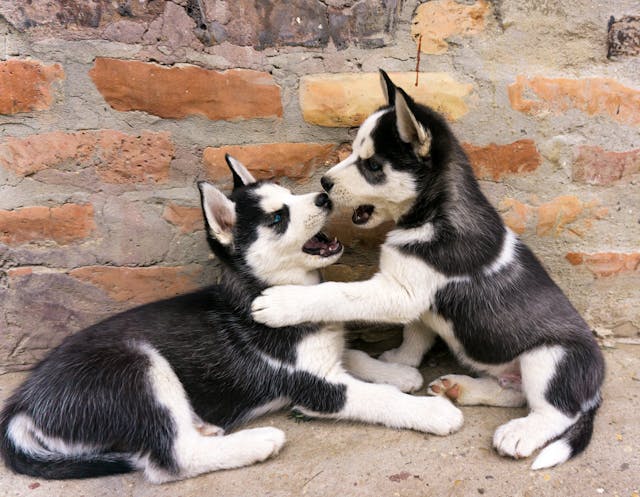
Unlike the Siberian Husky, the Alaskan Husky is not a purebred dog. The Alaskan Husky is a designed dog breed, specifically defined by their purpose of being sled dogs. It is slightly larger at 20-23.4 inches tall and weighing 35-60 pounds. Their lifespan is about 12-15 years.
The main differences between the Alaskan Husky and the Siberian Husky are that the Alaskan Husky is larger and leaner, has a short-medium length coat while the Siberian Husky's coat is always medium length. The Alaskan Husky usually has brown eyes, and has a more pronounced tuck-up (where the rib cage and hind legs join when looking from the side). The Alaskan Husky is the 7th fastest dog in the world and can travel at up to 28 mph and has extreme endurance. They love exercising, so they are great companions for hiking, running, and mountaineering.
The Alaskan Husky CANNOT live in very hot climates. Whatever you do, do NOT shave your Alaskan Husky. This causes them to be more susceptible to sunburns.
They tend to be more calm than the Siberian Huskies, so as long as the get the exercise they need, they are great with kids. They are very friendly, so don't use them as guard dogs. They are great with other dogs and are very sociable. They are also highly trainable even from an early age.

Alaskan Malamute
The Alaskan Malamute is the largest of the Arctic dogs. They have a wide head with erect triangular ears. It is seen as the image of a wolf, but with a sweet expression. They also have a thick double coat which averages 1-3 inches in length and comes in multiple combinations of white, grey, black, and red. The Alaskan Malamute is loyal, intelligent, sweet, extremely affectionate. They are great with children, as long both the dog and child are old enough to be safe. They are happiest while living outside as long as they receive companionship, but they also enjoy living inside with their family, or "pack". Without training or firm leadership, they can become destructive.
It can be difficult to train Malamutes for formal obedience, but it is not difficult to train them to be well-mannered because they love to please their owner and "pack leader". They don't eat as much as you would think, but they will wolf down whatever is given to them which can lead to bloating. They are relatively quiet, but they will howl and dig. They have a high prey instinct, so supervise them when around small animals.
Male Malamutes can be anywhere from 24-26 inches tall and weigh 80-95 pounds. Female Malamutes can be anywhere from 22-24 inches tall and weigh 70-85 pounds. Their lifespan is about 12-16 years. Malamutes are prone to bloating, hip dysplasia, and dwarfism.
Apartment life is not recommended as they need to be able to run, so a yard with a high fence is a must.
Make sure to bury the base because they will dig their way out.
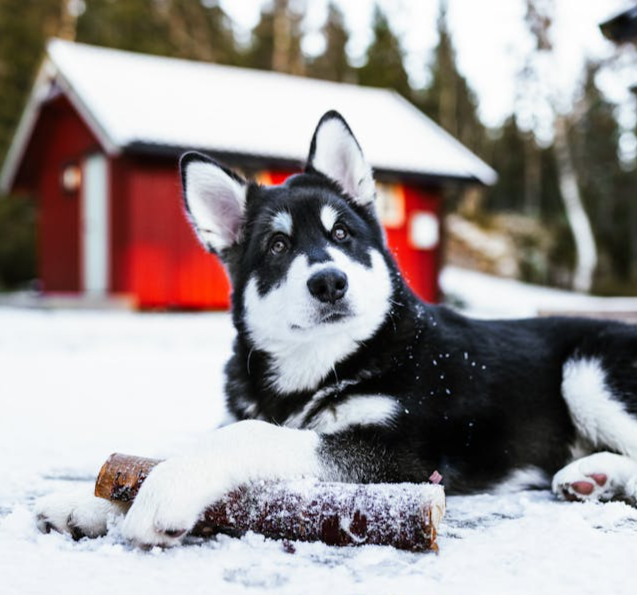
Alaskan Klee Kai
The Alaskan Klee Kai looks like a miniature version of the Alaskan Husky. They have a longer lifespan at about 15-20 years. There are 3 general sizes that they could grow to be: standard,15-17 inches; miniature, 13-15 inches, and toy, anything up to 13 inches. They generally weight between 10-20 pounds, depending on size. Even with their smaller size, they also have a double coat. Just like the larger cousins, the klee kai with shed twice a year.
The Klee Kai is an intelligent, high-activity dog. They are highly trainable and unlike the other dogs above, they are very suspicious of strangers, so they are great watch dogs. They are good escape artists, but only if they aren't getting enough exercise.
Just as the dogs above, the Klee Kai need lots of interaction with their owners and are hunters. They should not be left outside, but are hardy with their winter coats if needed. They will clean themselves just like cats. A large yard is not required because the Klee Kai will e content with a few walks and playing fetch.

American Eskimo
The American Eskimo Dog is a very social and needy dog. They have a lifespan of 12-14 years. There are 3 general sizes that they could grow to be; standard: 22-40lbs and 14-18 inches, miniature: 12-21lbs and 12-14 inches, and toy: 8-11lbs and 9-12 inches.
Eskies make for good family dogs and are extremely loyal. They are intelligent, but that leads to stubbornness. They are cautious around strangers, but will warm up to people. If not active, they will find something to do (including, but not limited to chewing on things or escaping).
These dogs will need a lot of interaction with their owners and will be alright with other dogs and cats if raised with them. Eskies are more likely to have problems with more exotic household pets such as reptiles or birds.
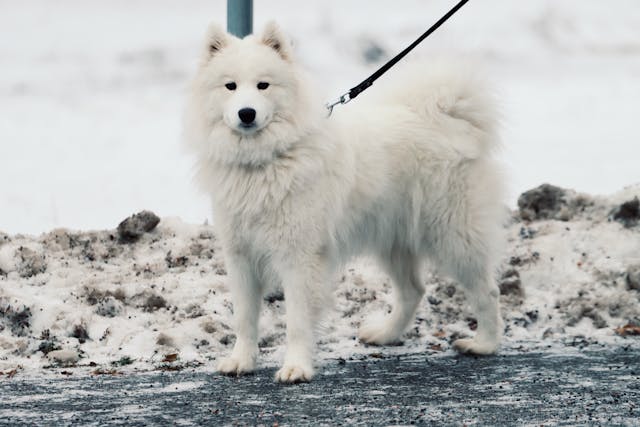
Samoyed
The Samoyed is medium-sied working dog dog with height ranging from 19-23 inches and weight from 50-65lbs. Just like with the American Eskimo, Samoyeds are extremely social and needy dogs. Their lifespan is typically 10-14 years.
They will need daily exercise and they enjoy training. They will compete in obedience, agility, herding, sledding, and weight pulls. Samoyeds tend to be more independent and will do best when given tasks or chores (even just pulling a cart). Grooming will be necessary almost daily.
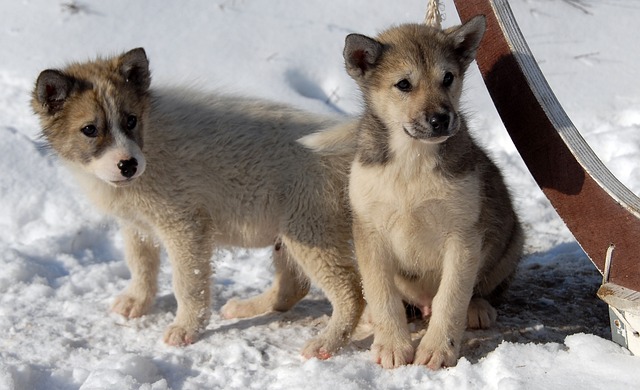
Greenland (also known as the Canadian Eskimo Dog)
The Greenland is a large dog, weighing anywhere between 66-95lbs and about 24-30 inches. They are considered to be working dogs, and will require some sort of ability to work. They will be friendly towards people, but they are extremely destructive and will dig and chew quite a bit. They will not do well aorund other pets.
They can do well in a kennel if other Greenlands are there as companions. That said, they will fight for dominance and should be keot separate. Greenlands are extremely pack oriented and will be aggressive outside of their pack. They are great for backpacking or sledding activities, but not great guard dogs.
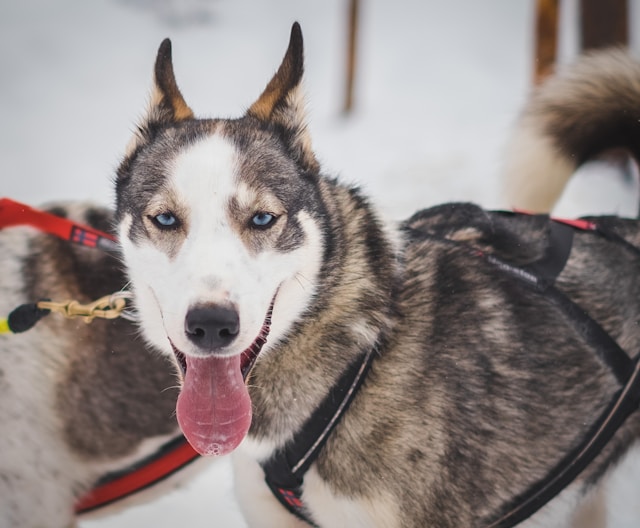
Seppala Siberian Sled Dog
The Seppala used to be the same breed as what is known today as the Siberian Husky, they are now considered to be different breeding in appearance. They will be 22-23 inches tall and between 40-50lbs as an adult. They will live to be 12-16 years old. There are a wide variety of coat colors that they could have. Their coat sheds heavily twice a year requiring daily brushes.
They are an active working dog that when provided enough exercise, can be quite calm. They are trainable, but will only obey if they sense the owner is stronger minded than they are. You must be firm and confident as a "pack leader" if you are going to adopt a Seppala.
Ideally, a Seppala should be living somewhere with a large yard (fenced in preferred so they can roam on their own). They can be in an apartment if well trained, but they will need to be walked and be able to run everyday. They prefer to live in packs.
